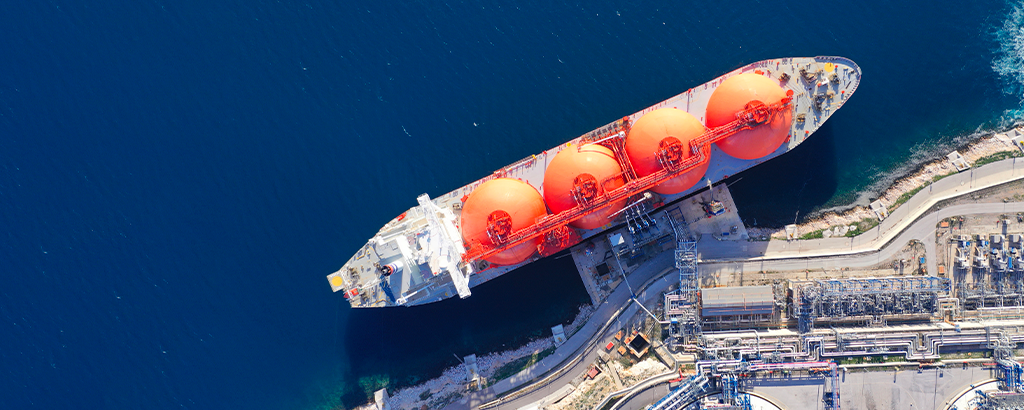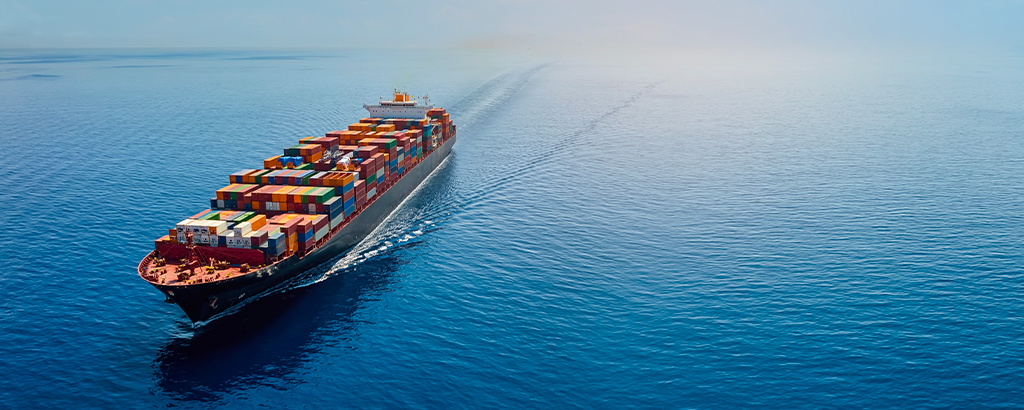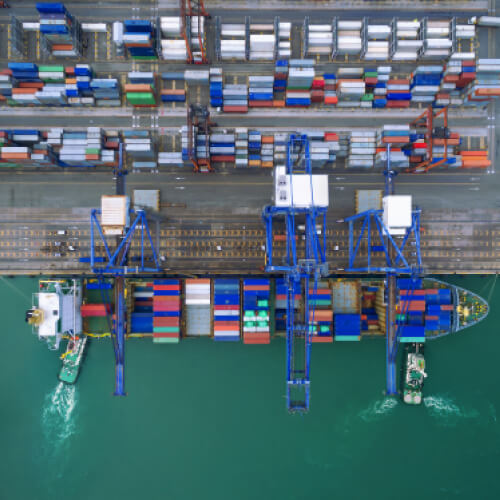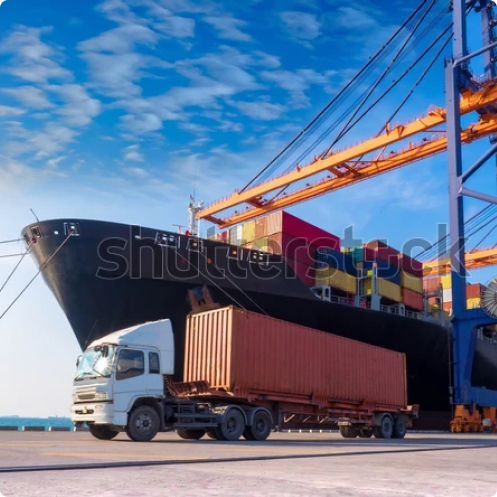Cargo ships – also known as freighters or cargo vessels – are a fundamental link in global maritime shipping. Whether transporting containers, vehicles, bulk materials, or liquids, cargo ships enable the efficient, reliable, and competitive movement of goods on a global scale.
In this article by Savino Del Bene, we will explore what a cargo ship is, the main types currently operating in the market, their technical, operational, and logistical differences, and provide an overview to help you navigate this essential topic.
What is a cargo vessel?
A cargo ship — also called a freighter or cargo vessel — is a commercial ship built and equipped primarily to transport goods from one port to another, along international or coastal routes. It is a merchant vessel designed to load, transport, and unload goods (containers, vehicles, raw materials, liquids, refrigerated cargo, etc.) while distributing weight, ensuring stability, and complying with safety and environmental regulations.
Some key aspects of this definition include:
- Function: transportation of goods (not passengers);
- Capacity: measured not only in volume or container units, but also in TEU or weight (deadweight tonnage – DWT);
- Dimensions and construction features: overall length (LOA), width (beam), draft (depth), and loading/unloading systems;
- Type of cargo: containers, bulk, liquids, general cargo, vehicles, refrigerated goods, and more.
Types of cargo ships: how many and what they are
There are many different types of cargo ships. The reason is simple: goods vary greatly in nature, loading methods, transport conditions, size, and weight. Consequently, the vessels that carry them are either specialized or multi-purpose.
In general, the “cargo ship” category can be divided into several main groups:
- Container ships;
- Dry bulk carriers (for bulk goods);
- Tankers (for liquids);
- Ro-Ro ships (roll-on/roll-off) for vehicles or wheeled cargo;
- Specialized refrigerated vessels for transporting perishable goods. Some container ships also carry “reefer containers”: refrigerated containers used for similar cargo;
- Multi-purpose vessels that combine different cargo types.
Below, we will examine each of these groups in greater detail to provide a complete picture of the sector.
Container ships
A container ship is a type of cargo vessel designed to transport standardized containers (typically 20 or 40 feet, known as TEUs — twenty-foot equivalent units). The containers allow for faster port operations and seamless transfer between sea, rail, and road. These ships are often very large — some have capacities exceeding 20,000 TEU.
Due to their deep draft and massive size, many of these large ocean vessels cannot dock at smaller ports or terminals with structural limitations (such as unsuitable crane types). In such cases, transshipment – the transfer of containers onto smaller feeder vessels to reach the final destination – becomes an essential process within the maritime logistics chain.
Sub-types of container ships
There are different types of container ships. Depending on their characteristics, container ships can be classified as:
- Feeder vessels: smaller ships serving secondary routes or smaller ports;
- Panamax / Post-Panamax / Neo-Panamax / Ultra Large Container Vessel (ULCV): classified by their size and draft, which determine whether they can transit through canals like Panama or Suez;
- Geared vs. gearless ships: geared are equipped with onboard cranes for loading/unloading at less developed ports, while ungeared rely entirely on port equipment.
What container ships carry
Container ships mainly carry packaged general cargo, such as consumer goods, industrial components, electronics, and textiles. However, they can handle almost any type of containerized cargo, thanks to the use of special containers (including flat racks, open tops, and tank containers) which allow for the safe transport of oversized, bulk, or liquid loads. Special containers called “reefers” are equipped with a cooling system. These containers are used to transport perishable and temperature-sensitive items. Today, container vessels are the most common and strategic type used in international shipping and global supply chains.
Dry bulk carriers
Bulk carriers are designed for the mass transport of loose dry goods: such as minerals (iron ore, coal), grain, fertilizers, cement, and timber. Their capacity is measured in deadweight tonnage (DWT). For example, “Handysize” vessels can carry about 15,000–35,000 DWT, while “Handymax” ships reach approximately 35,000–48,000 DWT.
Sub-types of bulk carriers
Bulk carriers can be classified as:
- Handy / Handymax / Supramax / Panamax / Capesize: categories defined by vessel size and draft, which determine the ports they can access;
- Specialized bulk carriers: such as timber carriers or open-hatch general cargo ships, capable of transporting both bulk and unit-load cargo.
What bulk carriers transport
These vessels are essential for the global commodities trade, transporting raw materials and agricultural resources. They are often operated under charter contracts rather than fixed liner schedules.

Tankers (liquid cargo vessels)
Tankers are ships specifically designed to transport liquid cargo in bulk: including crude oil, refined petroleum products, liquefied gases (LNG, LPG), and other chemical or industrial liquids. Their capacities are extremely high: “VLCCs” (Very Large Crude Carriers) and “ULCCs” (Ultra Large Crude Carriers) can carry hundreds of thousands of tons of cargo.
Sub-types of tankers
Tanker ships can be different in:
- Crude oil tankers: for unrefined oil;
- Product tankers: for refined petroleum products;
- LNG carriers: for liquefied natural gas;
Chemical tankers: for industrial and chemical liquids.
Industry requirements
These vessels are vital for the energy and chemical industries, requiring advanced safety systems and strict environmental compliance for complex maritime operations.
Ro-Ro ships (Roll-On/Roll-Off)
Ro-Ro ships are designed for cargo that can be loaded and unloaded by rolling directly on and off the ship via ramps or decks. They are commonly used for cars, trucks, trailers, industrial vehicles, and heavy equipment.
Sub-types of ro-ro ships
Ro-ro ships can be classified into:
- Pure Car Carrier (PCC): exclusively for automobiles;
- Pure Car and Truck Carrier (PCTC): for both cars and trucks;
- ConRo: hybrid vessels combining container and Ro-Ro decks;
- RoPax: designed to carry both vehicles and passengers.
Industry requirements
Ro-Ro vessels are integral to automotive and heavy-equipment logistics chains. Their main advantage lies in the fast, crane-free loading and unloading operations.
Reefer ships (refrigerated cargo vessels)
Reefer ships are designed to transport perishable goods that require temperature control, such as fruits and vegetables (in this case they are called “banana boats”), meat, fish, and dairy products.
How reefer cargo is shipped
Refrigerated goods can be shipped in two main ways: using dedicated reefer vessels, specifically designed for temperature-controlled transport, or through reefer containers loaded onto standard container ships. This last option is the most widespread today (approximately 80% of cold chain maritime transport is carried out by refrigerated containers), as it allows for greater flexibility in routes and seamless integration with intermodal logistics.
What reefer ships transport
They are mainly used in the global agri-food import/export industry, where maintaining specific temperature and humidity conditions is crucial.
Multi-purpose vessels (MPV)
Multi-purpose vessels can carry different kinds of cargo: general goods, pallets, containers, bulk, or Ro-Ro in a single voyage. Highly versatile, they are often used on routes with less-equipped ports or where cargo demand varies significantly.
Sub-types of MPVs
Some MPVs are fitted with their own cranes and handling systems, while others rely on port facilities. They may operate on short coastal routes or long international ones.
What MPVs transport
MPVs are chosen for complex or project-based shipments that require mixed cargo — for example, energy components, turbines, or steel structures — alongside standard freight.
Cargo ship types: summary table
Below is a table summarizing the main types of cargo ships handled, with name, indicative weight/dimensions, type of cargo and main characteristics.
| Ship Type | Approx. Weight/Dimensions* | Cargo Type | Key Features |
| Container ship | Over 20,000 TEU; length > 300 m; width > 45–60 m | Mostly packaged goods in containers, others with special containers | Fast loading/unloading, intermodal capability, specialized ports |
| Dry bulk carrier | Handy 15–35,000 DWT; Handymax 35–48,000 DWT | Minerals, grain, fertilizers, coal | High capacity, simple structure, raw-materials routes |
| Tanker | VLCC/ULCC > 200–300,000 DWT | Crude oil, refined products, gas | Liquid cargo, high environmental standards, long-haul routes |
| Ro-Ro ship | Measured in CEU (Car Equivalent Units); equipped with ramps | Cars, trucks, machinery | Rolling cargo, ramp access, fast loading/unloading |
| Reefer ships | Variable size; temperature-controlled holds | Food and perishables products | Temperature/humidity control, cold-chain compliance |
| Multi-purpose vessel (MPV) | Variable size | Combined cargo (bulk + general + container + Ro-Ro) | High flexibility, own equipment, ideal for project shipments |
*Figures are indicative and vary depending on vessel design, year of construction, shipyard, and classification.
Conclusion
The world of cargo ships is extremely complex and constantly evolving. The choice of vessel type does not depend solely on the nature of the goods but also on variables such as size, weight, loading method, transshipment needs, and the infrastructure available at the ports of origin and destination. In other words, the same category of goods may travel on different types of vessels depending on operational and logistical conditions.
This article provides a simplified overview to help navigate the main categories of cargo ships, but in practice, every shipment requires a personalized analysis. For this reason, relying on ocean freight services like those offered by Savino Del Bene means having access to expert consultancy capable of identifying the most efficient, safe, and sustainable maritime transport solution for your business needs. Need tailored advice? Contact your local Savino Del Bene representative today.






